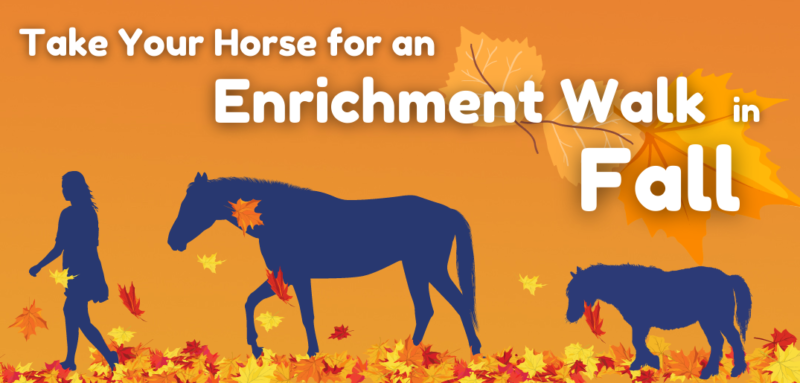Fall is a beautiful time of year for hitting the trail with your horse. The bugs are (mostly) gone, the leaves are beautiful, and the temperature is perfect for both of you. Mostly, we think of enjoying the trails on horseback – but you can go for an autumn walk alongside your horse too! Taking your horse for a walk is a great equine enrichment activity. Here’s why enrichment walks are great, and four tips you need to know to make your fall enrichment walk at a success.
What Is a Horse Enrichment Walk?
An enrichment walk is really simple – it’s taking your horse for a walk! People take their dogs for walks all the time, but for some reason it’s not as common to just take your horse for a stroll. That’s a shame, because walking with your horse is a great way to bond with them and give them an interesting but low key enrichment activity.
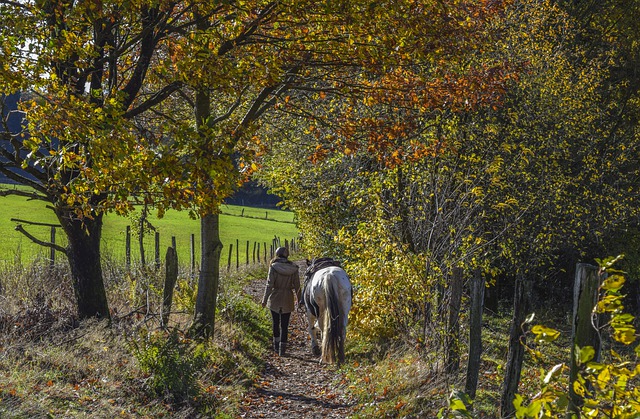
When you go for an enrichment walk, you’ll walk at your horse’s own pace. You may set up your walking course in advance with different sensory opportunities to create a sensory trail for your horse. Or you can just enjoy the fresh air and change of scenery! If you go for your walk on a trail, there are plenty of extra sights and stimulation without any extra work on your part.
Why is Going for a Walk Good Enrichment for Horses?
Going on a walk is really good horse enrichment. Remember, enrichment for horses is all about giving your horse a chance to express natural behaviors. After grazing, walking is one of the most natural horse behaviors of all.
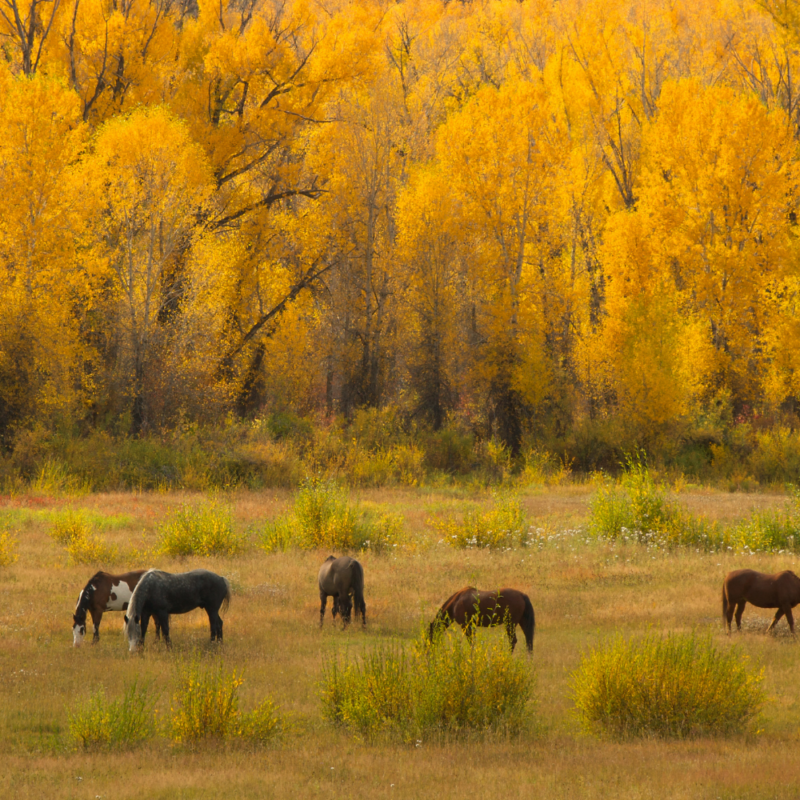
Most horses today don’t get enough exercise time outside of riding. Most pastures aren’t especially big, and many horses spend part of their day in a stall. But horses are grassland animals whose bodies are made for covering long distances every single day. Walking isn’t just good for them – it’s essential for their physical and mental health. Going on a walk, without the additional requirement of carrying a rider, recreates this low-intensity activity.
Going for a walk with your horse is is an enrichment activity that doesn’t involve food – except for the training rewards you’ll use if you take your horse on a lead-free liberty walk. Lots of enrichment for horses encourages feeding behaviors like solving a puzzle for treats, but it’s great to add other, non-food enrichment to your horse’s routine. An enrichment walk is especially good for horses on limited diets who need additional sensory stimulation.
Why Go for a Walk Instead of a Ride?
An enrichment walk – especially a liberty walk – has some unique benefits for your horse. For one, it’s open to all horses, even those who aren’t ridden. If your horse is too young for riding, unsound for carrying weight, or not trained to safely ride out in the open, a walk lets you both enjoy the great outdoors.

An enrichment walk gives your horse lots of sensory stimulation. On an enrichment walk, your horse won’t have to focus on heeding the cues of a rider. They’re free to stop and listen, sniff things, even take a bite of grass or leaves here and there. It’s a very different experience than being ridden around the stable property or out on the trail.
There are some important things to note before you set up an enrichment walk in autumn. Fall enrichment walks have a lot of perks, but also some special challenges. To help your horse get the most from their walk and keep everyone safe, make sure you keep up with these four tips.
1. Check the Trail or Path First
If possible, walk or drive the area you want to take your horse for a walk before you and your equine friend leave the stable. This is easy if your enrichment walk stays on barn property or around the fenceline.
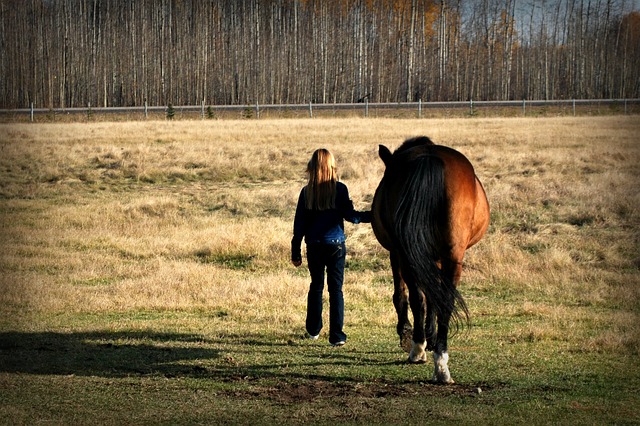
If you’re going onto a nearby trail, make time at the start of fall to check the trail without your horse. Fallen leaves can problems. Holes, rocks, or sharp pieces of litter are trip hazards that neither you or your equine friend should step on. You only need to do this safety sweep once, then you can enjoy your walking route all fall and winter.
Your pre-walk trail check is also a good time to think about our next important point: hunting activity.
2. Observe Hunter Safety
Fall is hunting season, particularly in the rural United States. The outdoors can be beautiful in fall and a perfect time for going on an enrichment walk with your horse, but it’s also a time when sportsmen and women are out seeking game or target shooting.

When you plan to walk in the woods during hunting season, it’s safest to stay within no-hunting areas. If you own the property where you plan to enjoy a walk, posting no-hunting signs is a good idea. Consider communicating with anyone you have given permission to shoot on your land to find out when they plan to be there.
If you don’t own the property – if you board at a stable with adjacent trails, for instance – talk to barn staff about whether hunting occurs nearby.
Whether hunting is allowed in the places you plan to go for a walk or not, you should always wear blaze orange if you’re in the woods in fall. An orange halter like this inexpensive nylon one from Weaver is a good idea. Also available are blaze orange exercise sheets:

Decking out in blaze orange for your fall enrichment walk is a little inconvenient. But it’s worth the time in order to enjoy the season in safety.
Adding noise to your walk is also a good idea if you’re on a multi-use trail for your fall enrichment walk. Bells, playing music on your phone, or chatting to a buddy (or your horse!) keeps warn others of your approach.
If there’s a lot of hunting in your area, play it safe and keep out of the woods until the end of hunting season. You can take your fall enrichment walk around the stable instead. Safety always comes first!
3. Don’t Eat the Leaves
Fall leaves are beautiful, but some of them should not be on the menu for your horse. Most of the time, horses on a walk won’t try to vacuum up fallen leaves. But some horses might be too enthusiastic about all the new sights and smells during their enrichment walk and try to take a bite. The majority of trees and other plants are very safe for sample. But a few plant species, such as black walnut and red maple, are highly toxic and must be avoided.
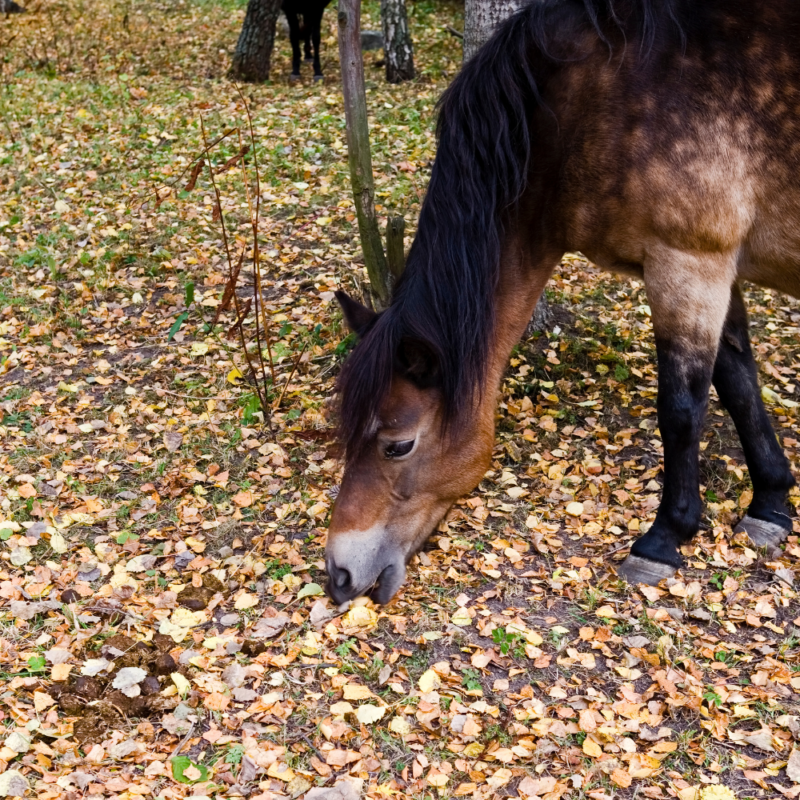
It’s unlikely that your horse could snarf up more than a leaf or two without you noticing. So while you enjoy your walk, remember basic safety and keep an eye on your horse. Bringing food along to practice good walking behaviors with positive reinforcement is a good idea anyway! So feel free to distract your horse from fallen leaves by providing them with tasty treats from your own pouch.
4. Fall Makes Things Look Different – And Maybe Scary
When autumn arrives, there’s a big and sudden change in the environment. If you already take your horse for enrichment walks, be aware of the differences in sights, sounds, and smells that fall brings.
When the leaves drop, a familiar trail suddenly looks very different to your horse. Trees without their leaves can appear brand-new and distant objects seem closer without foliage. The natural decomposition of all those leaves creates brand new scents. And there’s that lovely crunch of dry autumn leaves under your feet and your horse’s hooves.
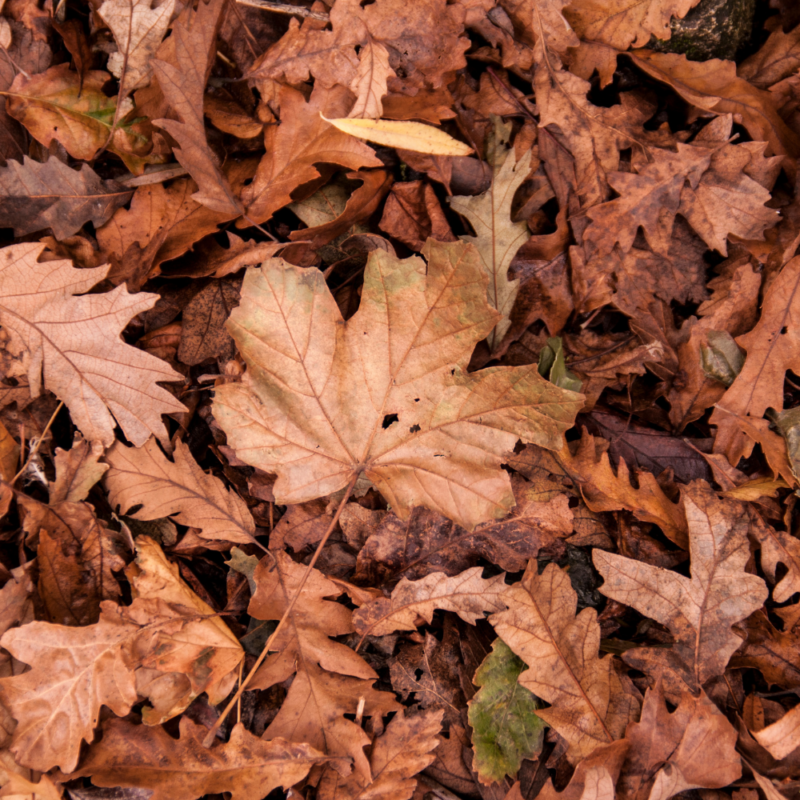
Those things are lovely to us, but all that change at one time can be overstimulating to your horse. If your horse is often on the energetic side or tends to be nervous, expect that they may be worried about how different everything seems when you take a walk in fall.
Walks are supposed to be enjoyable enrichment experiences, so don’t force your horse to go for a walk if they get nervous. During the walk, be calm and relaxed, and reassure the horse if they’re worried. And if your fall walk isn’t as much fun for your horse as it is for you, don’t feel bad about turning around and heading for home. You can always try again on a different day!
The Takeaway: How to Enjoy a Fall Enrichment Walk with Your Horse
Fall is the perfect time of year to go for a stroll with your horse. You’ll both enjoy all the enrichment benefits of taking your horse for a walk, from mental stimulation to low-intensity exercise. The temperature is perfect, the bugs won’t bug you, and you and your horse will bond. So take these four tips and go enjoy the leaves together!
Looking for enrichment ideas that your horse can use during pasture time? Try the Treat and Puzzle Feeders page for lots of content!
Does your horse need enrichment for stall time? The Stall Enrichment and Boredom Busting section is for you!
And lastly, if this safety-first article resonated with you, please check out our ebook on Amazon: Safe Equine Enrichment. It covers all kinds of enrichment safety issues in depth, including traveling off property on walks like this! It’s a quick read and good investment if you’re serious about giving your equine friends a more enrichment experience.
